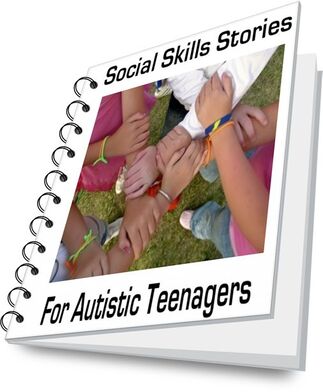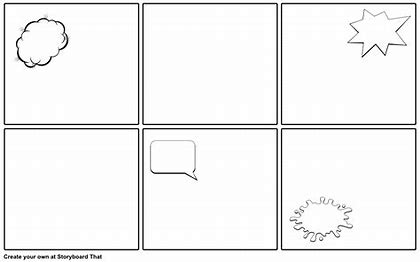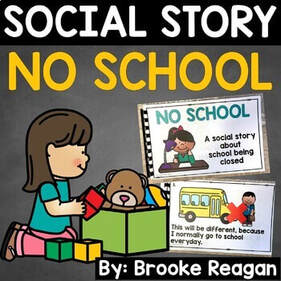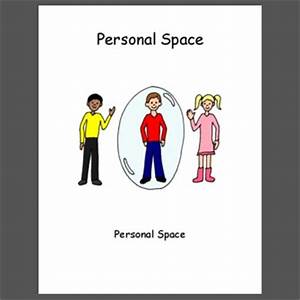Goal of a Social Skills Story –
#SocialSkills
The main objective for any intervention strategy should be to help the child with autism cope with and better understand expected behaviors, skills, and communications. Social Stories WILL engage children, thus helping them learn better ways of interacting with their environment, encounters, and situations. These stories CAN HELP to reduce an autistic child's stress, confusion, or anxiety.
#HelpWithSocialStories
Using Social Skills Stories as an intervention strategy will help you with improving your child's understanding of many situations that they are struggling with. This can have a positive affect on reducing unwanted behaviors. Generally, children with an autistic spectrum disorder are visual thinkers and learners, meaning they can often think in pictures.
Social Stories use this 'picture' strategy and are usually visually rich, EASY TO USE plus, they can be edited and personalized to suit all ages and abilities.
Retrieved from – http://www.autismsocialstories.com/behavior/index.html
Create your own Comic Strip or Storyboard. Use real-life images, Clip Art, or drawings for each important message.
#StoryBoard
Social Stories for Autism; Retrieved from – www.autismsocialstories.com/behavior/index.html
#Homeschool
People also ask –
How to write social stories for children with autism?
#Homeschool
Write an outline of your social story, and consider aspects like setting, who else is in the scene, how long the event lasts and what happens during the situation. You want the story to be brief enough to maintain a child’s attention, but you also need enough detail to accurately describe a situation in a way a child with autism will understand behavior and skill expectations.
#ChildsDevelopment
Why are social stories so important for children with autism?
Social skills are an important piece of your child’s development, but children with autism benefit so much from social stories. Social stories will help your autistic child to better understand and follow rules and routines of a new event or situation. Or, to gain insight into the perspectives of others. #Communicate
The ability to communicate one’s wants and needs help in decreasing frustrations which are provoking negative behaviors. Also helping in increasing the opportunity to learn to communicate one’s emotions and expressive language. The ability to communicate one’s wants and needs helps in decreasing frustrations which are provoking negative behaviors. Which at the same time, helps in increasing the child's opportunity to learn to communicate their emotions and expressive language.
Know the facts both positive & negative, but focus on the positive. Focusing on the positive behavior reduces anxiety. Give examples of what to do, instead of what NOT to do.
No School: Free Social Story website – Brookereagansclass.com/no-school-free-social-story
A social story about school being closed –
- I will NOT be going to school for a little while. This will be a change for everyone.
- Instead of going to school I will be learning, & spend more time at home.
- This will be different, because I normally go to school.
- Even though it is different, I’m positive it will be okay.
- I will have school work to do, a routine to follow.
- I might miss my teacher & friends, but I know I’ll see them again
- At home, I will listen, follow the rules, I’ll be a helper.
- I will still be learning & having fun with my family.
Retrieved from – Brookereagansclass.com/no-school-free-social-story
< My Thoughts > Adjust this information as needed for your family's current circumstances. Try to keep it positive and age appropriate. Maybe different stories for each family member. Let them help you create one that’s just right!
Social Stories About personal space –
1. Use visual cues to illustrate personal space
Visual cues are super helpful for kids, especially those with autism and/or hyperlexia. You can use a visual clue like a hula hoop to demonstrate the invisible personal space bubbles that we all have. Or try holding a 6 ft. object between you and your child to show how much space is needed.
2. Teach social cues for body language
Make sure your child knows what to look for to determine whether they are too close or just the right distance from another person. Teach them to look for social cues such as:
- The person's face looks mad, confused, annoyed, or uncomfortable
- The person backs away
- The person puts their hands up with palms facing out
- The person avoids eye contact or starts to look elsewhere
- The person moves over or adjusts their position
- The person turns away
- The person starts to fidget or squirm
- The person's body looks stiff
3. Practice personal space
Practice makes perfect, right? Kids can master the rules of personal space simply by practicing and repeating the skills over and over. Teach your kids the one-arm rule. That is, keep one arm length between you and your friend to maintain good personal space.
Role playing is one way to practice personal space with your kids. You could even use their favorite toys or stuffed animals to demonstrate the concepts of personal space!
4. Look at pictures to explore personal space concepts
Spend some time looking at pictures of people with your child. Talk about the body language the people are showing and whether or not good personal space is being observed.
#SocialDistancing
5. Teach personal space language
Be sure to not only model personal space language, but to teach your kids some helpful personal space related language. Some example phrases could include:
- I need some space!
- That's too close!
- You can come closer!
- You're too far away right now.
- You're standing too close to me.
Retrieved from – https://www.andnextcomesl.com/2017/03/how-to-teach-kids-about-personal-space.html





 RSS Feed
RSS Feed